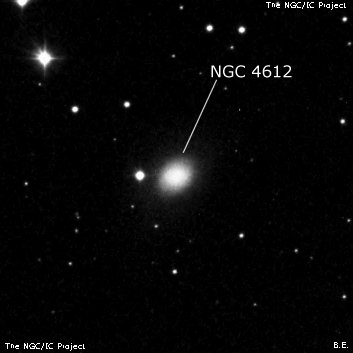
William Herschel discovered NGC 4612 = H II-148 = H II-20 = h1384 on 23 Jan 1784 (sweep 105) and simply noted II-20 as "vF". The four nebulae found on this short, early sweep were not placed well, and there is nothing at his position (CH's reduction). But 1 min 45 sec of RA west is NGC 4612 = UGC 7850. On 13 Apr 1784 (sweep 191) he found this galaxy again and noted II-148 as "not F, R, bM and growing fainter by slow degrees." His offset from 31 Vir points to NGC 4612 = UGC 7850. On 1 May 1786 (sweep 560) he recorded "preceding the most south of a row of stars. cB, pL, mbM." On this sweep he it was called II-20, and the internal designation (320) is crossed out in CH's fair copy. Nevertheless JH decided II-20 and II-148 were possibly different objects because of the discrepancy in positions and assigned two GC designations, though Dreyer combined both in the NGC. He commented in his 1912 revision of WH's catalogues that a sketch of II-20 "agrees perfectly with the the description of II-148 on 28 Dec 1785 (sweep 498) "preceding a row of considerable stars and near the south of them, making a triangle."
400/500mm - 17.5" (4/21/90): moderately bright, small, slightly elongated, sharply concentrated with a very bright compact core. Located at the SW end of a string of five bright stars mag 9-10.5 including a mag 10.5 star just 1.0' E. The NE end is this string is a double star 10.5/12 at 20". NGC 4623 lies 25' NNE.
Notes by Steve Gottlieb